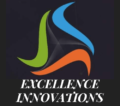Last updated on April 3rd, 2024 at 04:26 pm
Writing a successful CDR is crucial for engineers aspiring to migrate to Australia for career opportunities.

Table of Contents
ToggleImportance of CDRs for Engineers Migrating to Australia
CDRs play a crucial role in the migration process for engineers aiming to work in Australia. They provide a comprehensive assessment of an engineer’s skills, experience, and qualifications, ensuring they meet the standards set by Engineers Australia.
Hiring Professional Services
While writing a CDR can be challenging, hiring professional services can assist in crafting high-quality reports that meet Engineers Australia’s standards. These services offer expertise, timely support, and a track record of successful outcomes.
In conclusion, engineers aspiring to migrate to Australia should prioritize the preparation of a well-structured, original, and meticulously written CDR to increase their chances of approval by Engineers Australia.
CDR Australia Format
Continuing Professional Development (CPD)
Continuing Professional Development (CPD) Report is required by an Engineers Australia for the migration skilled Assessment. In CPD, make sure that an engineer keep himself up to date with developments in the field of engineering. CPD provide the necessary information: title, date, duration and venue of the training. You do not need to contain more than one A4 page in Continuing Professional Lists. CPD activities are to be designed to update or to extent your knowledge and skills, and enables to maintain technical competence, successfully deals with changes and serve better the community. Participation in CPD activities grow your networks and contacts.
Career Episodes
For your Engineers Australia assessment, you are required to provide detailed accounts of three career episodes where you applied your engineering knowledge and skills. Each career episode should begin with:
Title: Clearly state the title of the engineering activity or project.
Dates and Term: Mention the duration of the career episode.
Geographical Location: Specify the location where the experience took place.
Organization or Employer Name: Provide the name of the organization or employer where you undertook the project.
If your career episodes involve academic projects, additionally include:
Supervisor Information: Name and email address of your supervisor.
Subject Name and Code: Details of the academic subject associated with the project.
Compose your career episodes in English, in essay format, and in the first person. This task presents an opportunity to showcase your communication skills. Remember, your career episodes are pivotal for the assessment process. They should be based on projects or work experiences that you have been involved in. Explain the project and your specific role in it. Utilize the engineering method to outline how you approached the tasks—define, plan and design, deliver, evaluate.
Delve into the particular problems you encountered, your application of engineering knowledge and skills, and the insights you gained from the experience. It’s essential to demonstrate how you developed and exhibited all the entry-to-practice competencies relevant to your occupational category. Ensure that each competency is addressed at least once across your three career episodes.
Each career episode should ideally range between 1000 and 2500 words. Focus primarily on the engineering activities undertaken. Include ample engineering evidence to substantiate each career episode, such as diagrams, photos, calculations, tables, standards, or software.
To facilitate the construction of your summary statement, number the paragraphs in your career episodes. This numbering system will aid in cross-referencing against the competency elements outlined in the summary statement template.
If you’re a recent graduate with limited work experience, you can draw upon experiences from your academic projects. In cases where you collaborated within a group, delineate your individual contributions to the project and elucidate how your efforts contributed to the project’s overall outcomes.
Ensure clarity, coherence, and relevance in your career episode narratives to effectively demonstrate your engineering prowess and aptitude to the assessing body at Engineers Australia.
Career Episode 1 (CE 1)
Introduction:
In CE 1, I detail my engineering endeavors at [Organization Name] from [Start Date] to [End Date].
Background:
At [Organization Name], I contributed to a groundbreaking project aimed at [Describe Project Objectives]. This initiative sought to [Describe Project Scope] within the context of [Industry/Field].
Engineering Activities:
During CE 1, I assumed pivotal roles, including [Role 1], [Role 2], and [Role 3]. My responsibilities encompassed [Describe Key Responsibilities] while addressing challenges such as [Technical Challenges Faced]. To overcome these obstacles, I employed methodologies like [Methodology 1] and [Methodology 2].
Summary:
CE 1 highlighted my instrumental contributions to optimizing [Project Outcome]. Through strategic planning and diligent execution, I facilitated [Achievement 1] and [Achievement 2], driving tangible results for the project and organization.
Career Episode 2 (CE 2)
Introduction:
CE 2 chronicles my tenure at [Organization Name] during [Start Date] to [End Date], focusing on my engineering endeavors.
Background:
At [Organization Name], I was tasked with spearheading [Project Name], an initiative aimed at [Describe Project Objectives]. The project’s scope extended to [Describe Project Scope] within [Industry/Field].
Engineering Activities:
In CE 2, my roles encompassed [Role 1], [Role 2], and [Role 3], entailing [Key Responsibilities]. Amidst challenges like [Technical Challenges Faced], I leveraged methodologies such as [Methodology 1] and [Methodology 2] to achieve project objectives.
Summary:
CE 2 epitomized my commitment to excellence, culminating in [Project Outcome]. Through strategic planning and collaborative teamwork, I facilitated [Achievement 1] and [Achievement 2], leaving an indelible mark on the project’s success.
Career Episode 3 (CE 3)
Introduction:
CE 3 encapsulates my tenure at [Organization Name], where I embarked on [Project Name] from [Start Date] to [End Date].
Background:
At [Organization Name], I undertook [Project Name], aimed at [Describe Project Objectives]. This endeavor addressed [Project Scope] within [Industry/Field].
Engineering Activities:
Within CE 3, I assumed pivotal roles, including [Role 1], [Role 2], and [Role 3], with responsibilities spanning [Key Responsibilities]. Confronted with challenges like [Technical Challenges Faced], I devised solutions using methodologies like [Methodology 1] and [Methodology 2].
Summary:
CE 3 underscored my unwavering dedication to excellence, resulting in [Project Outcome]. Through meticulous planning and resolute execution, I facilitated [Achievement 1] and [Achievement 2], leaving an enduring impact on the project’s success.
Summary Statement (SS)
The summary statement offers a consolidated view of the competencies showcased across your career episodes. It outlines each element of the entry-to-practice competencies pertinent to your occupational category and elaborates on how you have addressed them throughout your narrative.
In the SS, you need to meticulously align your demonstrated competencies with Engineers Australia Stage 1 Competency Standards:
PE1 Knowledge and Skill Set: Throughout CE 1, CE 2, and CE 3, I demonstrated adeptness in [Area of Knowledge/Skill], as evidenced by [Reference to CE Paragraphs].
PE2 Engineering Application Ability: My practical application of engineering principles is evident in CE 1, CE 2, and CE 3, particularly in the context of [Specific Engineering Applications], outlined in [CE Paragraph References].
PE3 Professional and Personal Attributes: In CE 1, CE 2, and CE 3, I exhibited exemplary professional conduct and personal attributes, fostering effective teamwork and leadership qualities, as substantiated by [CE Paragraph Examples].
Reasons for CDR Rejection
- Inadequate Understanding of Guidelines: Failure to understand and adhere to the guidelines provided by Engineers Australia.
- Poorly Structured Career Episodes: Career episodes lack clear introductions, key engineering activities, and appropriate problem-solving strategies.
- Word Limit Violations: Exceeding or falling short of the suggested word limits for career episodes and other sections of the CDR.
- Technical Insufficiency: Lack of technical depth and clarity in describing engineering projects and contributions.
- Language and Format Errors: Errors in spelling, grammar, and formatting, as well as failure to use Australian English.
- Plagiarism: Submitting content that is not original or copied from external sources without proper citation.
- Insufficient Documentation: Failure to provide supporting documents that validate qualifications, experience, and achievements.
Key Points for Writing a Successful CDR
- Adherence to Engineers Australia Guidelines: Following the guidelines provided by Engineers Australia is paramount. This includes formatting, content structure, and specific requirements for each section of the CDR.
- Language Proficiency: The CDR must be free from grammatical, punctuation, and spelling errors. The tone should be formal and professional.
- Avoid Plagiarism: Plagiarism is strictly prohibited. All content must be original, and while references from the internet can be used, they should not be directly copied.
- Document Listing: Provide all necessary documents as per the requirements outlined by Engineers Australia, including personal documents, English proficiency test results, resume, academic records, and others.
- Introduction and Background: Include a suitable introduction and provide background information about the organizations you’ve worked for, projects you’ve been involved in, and your roles and responsibilities.
- Career Episodes: Write detailed career episodes focusing on your personal contributions, technical challenges faced, problem-solving skills, and project management experiences.
- Technical Design and Problem-solving: Highlight your involvement in technical design activities and demonstrate how you addressed technical difficulties within your projects.
- Project Management Details: Discuss your project management experiences, including timelines, task assignments, team collaboration, and meeting project objectives within deadlines and budgets.
- Summary Statement: The summary statement should effectively summarize your skills, experiences, and qualifications demonstrated in the CDR. It is the first section that assessors read.
- Continuous Professional Development (CPD): Include details of your CPD activities, demonstrating your commitment to maintaining technical competency and staying updated with industry trends.
Additional tips for writing your CDR report
- Each CE should be 1500-2500 words as per EA guidelines.
- Technicalities in carrier episode is must. Technical competencies should be explained.
- You should avoid writing in plain language
- Need to claim ANZSCO roles in CDR i.e if mechanical, it has to be in line with 233512
- You will be able to see the ANZSCO description (https://www.abs.gov.au/ausstats/abs@.n…documen…) in it. Those are job duties performed by mechanical engineers in terms of Engineers Australia. So we have to match those job roles while writing the CE.
- Any images that are taken from a source cannot be used for CDR purposes. If we put a copied image in CDR, it means a straightaway ban of at least 1 year. Therefore, kindly inform your writer to include images only if they are not taken from the internet. Otherwise, they are useless for us.
- The project report must provide in-depth information on design and fabrication
List of ANZSCO Occupation for engineering field for CDR project
- Material Engineers
ANZSCO 233112
- Engineering Manager
ANZSCO 133211
- Chemical Engineers
ANZSCO 233111
- Civil Engineers
ANZSCO 312212
- Geotechnical Engineers
ANZSCO 233212
- Structural Engineers
ANZSCO 233214
- Transport Engineers
ANZSCO 233215
- Electrical Engineers
ANZSCO 233311
- Electronics Engineers
ANZSCO 233411
- Industrial Engineers
ANZSCO 233511
- Mechanical Engineers
ANZSCO 233512
- Civil Engineers Technician ANZSCO 312212
- Mining Engineers
ANZSCO 233611
- Petroleum Engineers
ANZSCO 233612
- Aeronautical Engineers
ANZSCO 233911
- Agricultural Engineers
ANZSCO 233912
- Bio-Medical Engineers
ANZSCO 233913
- Engineering Technologists
ANZSCO 233914
- Environmental Engineers
ANZSCO 233215
- Engineering Professional
ANZSCO 233999
- Computer Network and System Engineers
ANZSCO 312311
- Telecommunication Engineers
ANZSCO 263311
- Telecommunication Network Engineers
ANZSCO 263312
- Civil Engineering Draftperson
ANZSCO 263311
- Production or Plant Engineers
ANZSCO 233513
- Electrical Engineering Draftperson
ANZSCO 312211
- Electrical Engineer Technician
ANZSCO 312312
- Telecommunications Field Engineers
ANZSCO 313312
- Telecommunication Network Planner
ANZSCO 313313
- Telecommunication Technical Officer
ANZSCO 313214
- Naval Architect Engineering
ANZSCO 233916
- System Analyst
ANZSCO 261112
Sample of CDR

Born with a relentless thirst for knowledge, I ventured into academia, mastering the art of PHD thesis and dissertation writing. Fuelled by curiosity, I embraced digital marketing, deciphering its nuances to become an expert in SEO, content strategies, and social media management. Alongside, I delved into the intricacies of nursing assignments, leveraging my multidisciplinary insights to assist students. Each endeavor shaped my journey, blending scholarly pursuits with practical applications.
